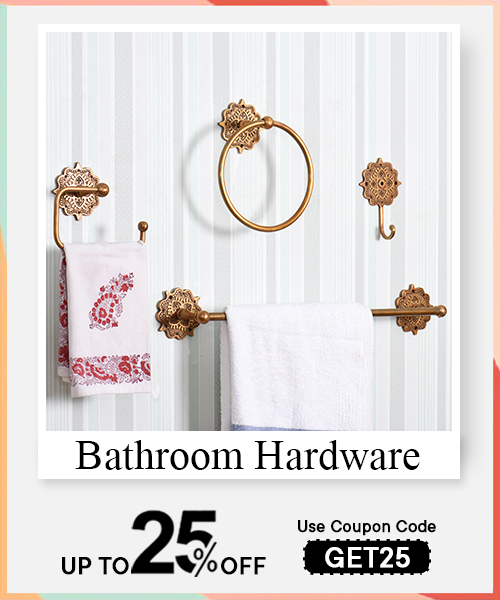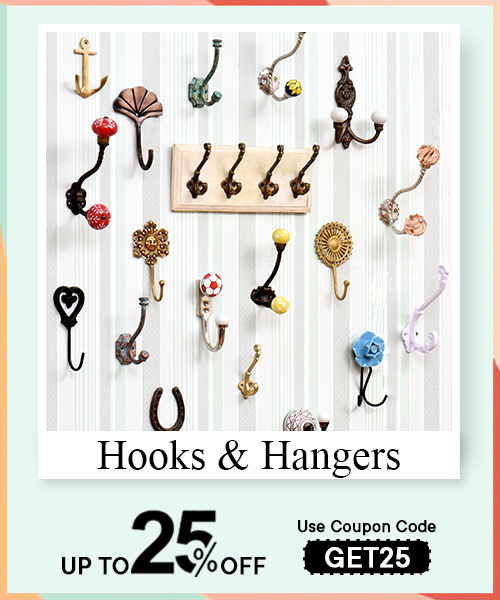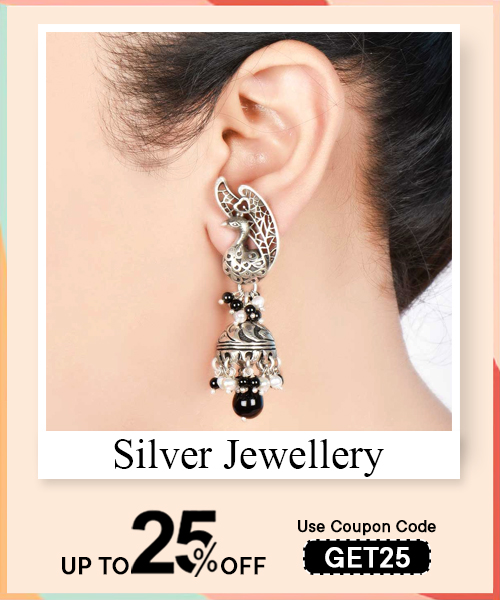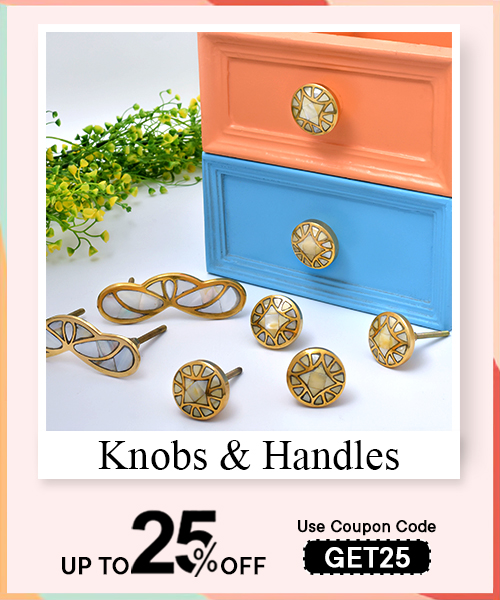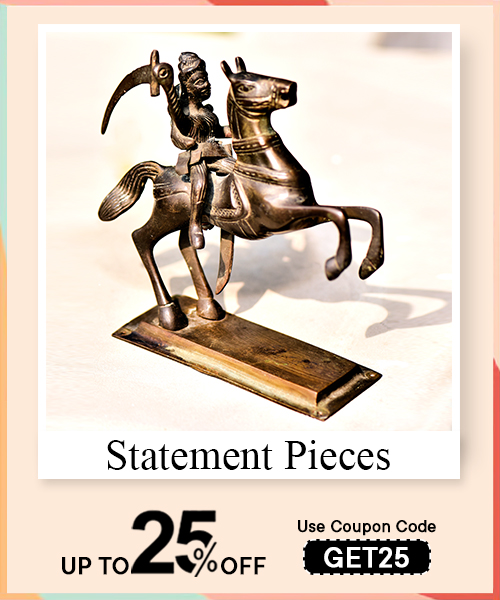Silver jewellery deserves thoughtful arrangement, not just for aesthetics but for longevity. Categorize your collection by type: rings, earrings, necklaces, bracelets, and anklets. Use velvet-lined trays or fabric-lined compartments to separate each piece, reducing friction and minimizing the risk of tarnish. For delicate items like filigree or oxidized silver, employ anti-tarnish bags or soft pouches. Hanging organizers work best for long chains and statement necklaces, while ring cones or stackable display boxes offer both visibility and space-efficiency. Layering your storage ensures that your oxidized bangles don't scratch against your stud earrings, and that chunky silver cuffs don’t entangle with thin chains.
Tangling is often the silent enemy of silver chains and intricate pendant necklaces. The key lies in separation and anchoring. Store each chain or long necklace in an individual zip-lock bag with the clasp hanging out. This simple trick keeps the chain anchored and reduces movement. Alternatively, use a hanging organizer with dedicated hooks—each necklace or bracelet gets its own space. For delicate layering chains, consider wrapping them around velvet rolls or inserting them through drinking straws to maintain their contour. Rings and studs, being smaller, should be placed in divided trays with soft linings to avoid scratches. Statement pieces, such as engraved cuffs or tribal necklaces, require dedicated compartments—preferably with padded dividers. Avoid tossing items into a single box; that's the perfect storm for tangles and scratches. Organizing by style and size while maintaining spatial separation is a preventive ritual that not only keeps your collection neat but also elevates your experience of wearing them.
Separation is not just a matter of aesthetics—it's a preventive measure. Begin by classifying your silver pieces by type: chains, earrings, rings, bangles, and pendants. Use stackable jewellery trays with multiple compartments to assign a space for each. Within each tray, add micro-dividers to separate heavier oxidized bangles from delicate jhumkas or filigree earrings. For studs and small rings, velvet or suede ring slots work beautifully. Place heavier statement cuffs or chokers in bottom drawers to avoid pressure on lighter items. Always ensure silver anklets, toe rings, and vintage brooches have their own pocketed pouches or zip-lock bags to avoid direct contact. Use clear labelling or transparent lids if you're a visual person—it makes daily accessorizing seamless. Each texture of silver, whether brushed, oxidized, or polished, requires tailored care. When your storage system reflects that, not only does your collection stay organized—it also feels like a curated gallery of wearable stories.
Efficient silver jewellery organization hinges on the right tools that blend form with function. Velvet-lined stackable trays keep rings, earrings, and small brooches separated, while also cushioning against scratches. Jewelry rolls, especially those with anti-tarnish fabric, are ideal for delicate pieces like filigree chokers or silver nose pins. Hanging organizers with transparent pouches make it easy to see and sort your oxidized necklaces, tribal pendants, or long temple chains without overlap. Consider using S-hooks or a pegboard to hang bangles and cuffs for accessibility. Travel-friendly jewellery boxes with individual slots are versatile for everyday use, especially when paired with silica gel packets to control humidity. Drawer inserts with adjustable dividers provide flexibility based on your growing collection. Labelled storage is a bonus—adding tags for types or styles helps avoid rummaging. When you use the right organizational toolkit, your silver jewellery becomes not just easy to find but more treasured and preserved.
Read More: Silver: Ancient Metal, Modern Marvel
Silver, though eternal in beauty, is vulnerable to air, moisture, and certain chemicals. The first rule—dry before you store. Even a hint of sweat or perfume can trigger tarnish. Wrap each piece in anti-tarnish cloth or store in zip-lock bags with air squeezed out. Insert silica gel packets or chalk sticks to absorb ambient moisture. For extra protection, use anti-tarnish strips specifically designed for sterling silver. Avoid wooden boxes with acidic linings or rubber bands that can react with silver. Store items in a cool, dry place, away from sunlight. Regular rotation and gentle polishing keep oxidation at bay and the luster intact.
Tarnish prevention begins with understanding silver’s sensitivity. Oxygen, sulfur, moisture, and oils are the culprits. Always clean your silver jewellery with a dry microfiber cloth before storing it. For long-term storage, wrap each piece—be it a Kundan-studded oxidized necklace or a minimalist sterling ring—in anti-tarnish paper or place it inside a tarnish-resistant pouch. Airtight zip-lock bags can be used for individual items; just remember to remove as much air as possible. Introduce activated charcoal, silica gel, or anti-tarnish strips into your jewellery box to control humidity. Store your silver in a fabric-lined box, not wood or leather, which can emit harmful vapors. Avoid plastic containers unless they're labeled tarnish-free. Keep pieces away from direct sunlight and separate from costume jewellery to avoid chemical reactions. Regularly wearing silver also helps—it breathes better on skin than in dark corners of a box. Think of storage as preservation, not just placement.
Silver has an unpredictable relationship with certain materials. Storing it improperly can invite irreversible damage. First and foremost, avoid rubber—found in bands, pouches, or even certain linings—as it contains sulfur, which accelerates tarnishing. Also, refrain from wrapping silver pieces in newspaper or acidic paper, as inks and chemicals react poorly with the metal. Wooden boxes—especially those not treated for jewellery—can emit acids that corrode silver over time. Never store silver with costume or plated jewellery; mixed metals can interact, leading to unwanted patinas or surface degradation. Leather, while stylish, is another danger zone due to its tanning agents. Plastic containers that aren’t specifically marked "acid-free" or "tarnish-resistant" should be avoided. Instead, opt for cotton muslin, anti-tarnish cloth, suede pouches, or velvet-lined compartments. Treat your silver like a living artifact—store it where breathability, dryness, and chemical neutrality are maintained. The right material ensures the right aging—graceful, not grim.
Yes, anti-tarnish strips are surprisingly effective, especially when used correctly. These strips are infused with chemical agents that neutralize airborne sulfur and moisture—the primary enemies of silver. When placed in storage containers, jewellery trays, or zip-lock bags, they absorb corrosive elements and create a controlled environment. They don’t clean or polish silver, but they significantly slow down the tarnishing process. They're especially useful for delicate oxidized earrings, toe rings, or filigree pendants that you might not wear daily. Replace the strips every 6 to 12 months depending on the manufacturer’s instructions or your local humidity. Ensure the storage container is well-sealed to enhance the strip’s effectiveness. While they are not a replacement for regular cleaning or proper storage techniques, they’re an excellent supplemental layer of protection. Think of them as guardians—silent, invisible, and effective, prolonging the shine of your cherished silver pieces.
Small spaces demand creativity and intention. Use vertical jewelry organizers with multiple tiers—ideal for silver earrings and nose pins. Opt for magnetic wall boards with soft-lined hooks to hang chains or pendants without tangling. Shallow drawers can be divided using velvet-lined trays; stack them like books. For bangles and cuffs, use upright roll stands or cushioned glass jars. Travel-friendly jewellery boxes double up as drawer inserts when space is tight. Pegboards with mini hooks and labelled pouches can convert walls into efficient display-storage hybrids. Each silver piece—from temple jhumkas to tribal chokers—can find a nook if you store with both purpose and poetry.
In apartments where space is luxury, jewellery storage must blend utility with compactness. Use stackable, velvet-lined drawer inserts to compartmentalize your collection—separating oxidized earrings from mirror-finish bangles. Hanging organizers behind closet doors or inside cabinets are perfect for long chains and dangle earrings. Wall-mounted magnetic boards or corkboards with hooks let you store—and showcase—silver necklaces and anklets without tangling. Clear acrylic boxes with dividers work well for daily wear rings and toe rings. Use decorative boxes that double as table décor; think carved wooden trays with soft cloth lining. Store lesser-used items like heavy temple jewellery in zip-lock bags with anti-tarnish strips inside fabric pouches. Vacuum-sealed bags can also be used sparingly for long-term storage. When you align form with function and prioritize accessibility, your collection doesn't just live in storage—it breathes in rhythm with your everyday routine. Think minimalism, but with a storyteller’s eye.
Storing silver jewelry in a small drawer requires mindfulness and a soft touch. Line the drawer with velvet or muslin to prevent scratches. Use compartmentalized trays or repurposed wooden boxes to segregate pieces—cuffs, bangles, chandelier earrings, and oxidized nose pins should each have their own space. Keep anti-tarnish strips tucked between pieces and avoid storing multiple items together, as silver is soft and prone to scratches. Every piece—whether it’s a temple-style necklace or minimalistic sterling studs—deserves its own breath of space, its own story. Avoid plastic; it traps moisture. Think soft fabrics, dry places, and sacred separation.
Small drawers are deceptively complex when it comes to storing silver jewellery. Silver is sensitive to both moisture and contact—two things drawers can’t always regulate. The key is compartmentalization. Use stackable velvet or felt-lined inserts that divide the space into segments for each item: toe rings, anklets, oxidized studs, engraved pendants, or handcrafted kada bangles. Introduce silica gel packets or activated charcoal to absorb moisture and pair them with anti-tarnish strips to slow oxidation. Avoid zippers or synthetic linings that trap humidity. Let each piece—be it vintage coin necklaces or ghungroo-adorned payals—rest in breathable, non-reactive fabric pouches if space is tight. You’re not just storing accessories; you’re preserving metal memories, cultural patterns, and skin stories. The drawer should feel like a curated whisper of your style—not a tangled memory of forgotten trinkets. Storing with care ensures your silver stays not only beautiful but emotionally charged and wearable across seasons.
Travel cases—those zipped pouches, roll-up wraps, or faux-leather boxes—can serve everyday storage needs surprisingly well. Choose one with soft suede or felt lining and divided compartments. Ideal for silver studs, pendants, or coin rings, these cases prevent tangling, scratching, and exposure to air. But over-reliance can feel transactional. These aren’t heirloom-friendly or display-worthy. They're functional cocoons—practical, compact, but emotionally neutral. If you like rotating your silver jewellery regularly—maybe temple earrings one day, tribal bangles the next—travel cases give you quick access. But make sure they’re not your final resting place for anything precious or heavy-set.
Travel cases can be quite effective for everyday silver jewelry storage—especially for those constantly rotating their looks or living in compact spaces. They offer protective compartments, secure zippers, and anti-scratch interiors that keep your oxidized jhumkas, gemstone-studded anklets, or engraved silver rings safe and organized. However, the material of the case matters: opt for ones lined with soft felt, velvet, or suede rather than synthetic, moisture-trapping fabric. While they aren't ideal for long-term heirloom preservation, they provide easy access and portability. Think of them as transitional nests—where your silver pieces wait to shine. But keep in mind, frequent handling and exposure—particularly to air and skin oils—may increase tarnish. So add anti-tarnish strips if you use them daily. Ultimately, travel cases are perfect for those who believe silver is meant to be worn, touched, and rotated often—jewelry as rhythm, not relic.
Creativity meets preservation when you upcycle for silver storage. A wooden spice box becomes a poetic vault for tribal earrings and floral-etched pendants. Ice-cube trays, lined with muslin, separate toe rings and studs elegantly. A cork board draped in lace can cradle hooks for silver danglers and chokers. These are not just solutions—they’re rituals. Each storage nook becomes an extension of your aesthetic. Reclaimed drawers, tinted with turmeric or sandalwood fragrance, make silver not just visible but reverent. These ideas honor both form and function—silver becomes display and story, not clutter or afterthought.
Creative DIY storage is where silver jewelry transforms from accessory to artifact. Household items like vintage tea boxes, embroidery hoops, or even used Ferrero Rocher trays can be repurposed into charming jewelry organizers. Add fabric linings, soft pouches, or cotton padding to these vessels, and suddenly your tribal chokers and toe rings find curated homes. Hanging earrings off a wire-meshed photo frame or inserting hooks into a wooden block can turn your oxidized jhumkas and silver tassels into wall art. The beauty of DIY lies in its intention—it’s a personal museum, a showcase of your evolving style. Add anti-tarnish paper in the background or a clove-studded sachet to absorb moisture naturally. These setups invite interaction and preserve the emotional energy of each piece. Through texture, scent, and sight, your jewelry doesn’t just wait—it breathes. Every time you open that drawer or box, it whispers your name in oxidized silver.
Repurpose thoughtfully, egg cartons for toe rings, divided pill boxes for nose pins, or old ice trays for dainty studs. Line each with soft cloth. Mount cork boards with hooks for hanging bangles and anklets. Reuse handkerchiefs as fabric wraps for oxidized necklaces. If you have a deep drawer, upcycle cardboard jewelry boxes and assign each to a theme: temple, tribal, modern, vintage. These simple touches are born from everyday items, turning domestic routine into aesthetic ritual. Silver deserves more than storage—it asks for curation. Let your storage reflect your love, your story.
Easy DIY options often reside in your own home. Reuse old boxes—like watch or mobile boxes—and layer them with cotton fabric or muslin. An ice-cube tray becomes perfect for organizing silver studs, toe rings, and charm pendants. Mount an old grater on a painted wooden slab and use its holes to hang earrings. Wrap delicate chains in tissue and secure them with thread to avoid tangling. Repurpose a shoebox lid with a grid of strings or pins for dangling your oxidized jhumkas or tribal earrings. Use double-sided tape to secure fabric on cardboard strips and create a bangle holder. What matters is not how complex the solution is, but how intentional. These storage hacks serve both function and feeling—your silver pieces remain accessible, visible, and safe from tarnish or scratches. Think of every tray or lid as a soft little shrine—where utility and reverence meet.

Household objects, when seen through the lens of utility and affection, can become graceful keepers of silver. A vintage spice box can cradle bangles and toe rings. Muslin-wrapped glass jars are perfect for storing small oxidized studs and finger rings. Old fabric napkins can be stitched into pouches—breathable, soft, and perfect for temple jewelry. Even a small terracotta bowl, lined with cotton, can become a resting place for antique kadas. Think softness, isolation, and airflow. What we use daily—matchboxes, trays, even coconut shells—can become sacred, personal, protective spaces for silver’s quiet shine.
Household items can transform into soulful silver sanctuaries with a bit of intention. Use egg cartons to organize small items like nose pins or minimal studs—just line each section with a sliver of felt or cotton. A muffin tray, repurposed and tucked into a drawer, holds rings, anklets, or pendants safely. Wooden tea boxes with divided sections work beautifully for categorizing tribal necklaces, oxidized bangles, or engraved toe rings. Hang bangles from a rolling pin or silver chain earrings on a cheese grater mounted to a wall—visually poetic and practical. Even empty candle jars, once cleaned and lined, can preserve single statement pieces. This approach does more than organize; it reflects your relationship with the jewelry. Your home becomes a living museum, where culture and craft find space alongside everyday items. Silver thrives in care and breath—it doesn’t need gold-tinted glamour, only thoughtful placement.
Yes—and you should. Line a wooden or cardboard box with flannel or anti-tarnish cloth. Place chalk sticks, activated charcoal pouches, or silica gel inside to absorb humidity. Create small muslin envelopes for each silver piece—chain necklaces, oxidized jhumkas, tribal anklets—and tuck anti-tarnish strips inside. Avoid plastic compartments; they trap moisture. If you're layering items, separate them with butter paper or soft tissue. Add a clove or camphor in a breathable pouch to fight oxidation naturally. This isn’t just a jewelry box—it’s a personalized climate-controlled chest for metal memories, forged by hand, worn by heart.
You can absolutely craft an anti-tarnish jewelry box at home with minimal materials and maximum intent. Begin with a sturdy wooden or thick cardboard box—avoid plastic, as it encourages moisture buildup. Line the interior with anti-tarnish cloth or cotton flannel. Add silica gel packs or activated charcoal in tiny breathable pouches to absorb ambient humidity. Include anti-tarnish strips, easily available online, between silver pieces like your vintage bangles, tribal rings, or temple pendants. You can even make small muslin bags to individually wrap your jewelry. To layer items safely, place soft butter paper or cotton in between. For natural oxidation prevention, tuck cloves or camphor tablets into the corners. Seal the box gently without making it airtight—silver needs to breathe. This box isn’t just for storage—it’s a container of lineage and care. When you open it, the shine should feel like a continuation of memory, not a battle against time.
Frequent-wear pieces—oxidized studs, silver hoops, engraved rings—deserve visibility and ease. Use open trays lined with velvet, ceramic bowls for rings, or tiered stands where air and eye both meet the metal. A corkboard pinned with lace and hooks becomes a poetic gallery wall for chains and jhumkas. Transparent glass lids offer visibility while guarding against dust. Display-friendly doesn't mean careless—it’s aesthetic protection. You want your silver to breathe, be admired, and stay ready. Think of it as wearable décor, where jewelry is not stored but staged—on display like fragments of a moving self-portrait.
Display-friendly storage solutions celebrate silver not just as an accessory, but as visual poetry. For pieces you reach for often—oxidized studs, ghungroo chains, tribal nose rings—consider velvet-lined trays or shallow wooden drawers with clear glass lids. This allows you to see your collection without exposing it to open air continuously. Wall-mounted corkboards or metal mesh frames can cradle earrings and pendants, letting them dangle like curated art. Ceramic plates or antique bowls placed on your dressing table allow for easy access to rings and daily-wear pieces. Just ensure every open display is kept away from moisture and direct sunlight. Place a clove or silica sachet nearby as a protective gesture. Display doesn’t mean neglect—it means elevation. Each item remains close, visible, and respected, not just for adornment but for its history. Let your silver shimmer in light, not in darkness—accessible, adored, and always ready to reflect your rhythm.
Acrylic-lidded boxes are perfect allies—visibility without exposure. Stack velvet-lined trays inside a drawer and keep the drawer slightly cracked to allow air but not moisture. Use glass jars for rings, each piece wrapped in soft tissue. Hang necklaces on a corkboard but shield with a muslin curtain. These subtle barriers protect while inviting daily use. Let oxidized bangles breathe on a wooden rod draped with cloth. The idea is simple: allow the silver to live in sight, but not in stress. Visible, yes. Vulnerable, never.
Striking a balance between visibility and protection means designing a space that lets your silver jewelry breathe while guarding it from tarnish and dust. Use clear acrylic boxes with soft-lined compartments to keep pieces like gemstone-studded anklets, oxidized chokers, or tribal toe rings easy to spot and safe from air exposure. Stackable glass containers with cushioned inserts allow rings and earrings to remain both secure and on display. For wall-mounted solutions, hang your silver necklaces and bangles on hooks and cover them loosely with muslin or lace fabric—breathable and gentle. Keep the setup away from direct sunlight and moist corners. Place a clove pouch, charcoal strip, or silica pack discreetly nearby for added anti-tarnish action. The goal is to make your jewelry a part of your daily environment—always seen, always reachable, never forgotten. It becomes a habit of love, not a chore of maintenance.
Yes, especially for lightweight oxidized earrings, chain necklaces, or anklets. Choose organizers with soft backing—cotton or felt—and transparent fronts so pieces remain visible. Hanging against a door or closet, they save space and prevent tangling. But avoid using them for heavy or intricate temple jewelry—it may stretch fabric or stress the metal. Rotate items to prevent pressure marks. These organizers are less like vaults and more like rotating exhibition panels—compact, mobile, and intimate. Let the silver dangle, breathe, and stay close—like a song you haven’t stopped humming.
Hanging organizers offer a practical and aesthetically pleasing way to store and display silver jewelry. They're particularly useful for lightweight pieces like oxidized earrings, silver hoops, tribal nose rings, or delicate chains. Opt for ones with fabric backing—preferably cotton or felt—and clear plastic fronts for visibility. Hanging behind a closet door or on a wall keeps your collection accessible without cluttering your space. However, they’re not ideal for heavier temple-style necklaces or intricate statement cuffs, as these can warp the organizer or weigh down the material unevenly. Rotate the position of the pieces occasionally to prevent permanent creases or pressure marks. Also, add a clove or charcoal pouch in an unused pocket for a natural tarnish deterrent. Hanging organizers turn jewelry into part of your room’s personality—display and utility combined. They allow your silver to be seen, remembered, and worn—not tucked away and forgotten.
Silver heirlooms and precious accessories demand reverence beyond mere display. Long-term storage is a ritual of preservation, an act of respect to the metal’s timeless elegance. The key is isolation from moisture, air, and pollutants that coax tarnish. Store pieces in anti-tarnish pouches or cloths infused with silver-safe chemicals, wrapped gently to avoid scratches. Avoid ordinary plastic bags; they trap moisture. Place items in a dry, cool environment, ideally with silica packets to absorb humidity. Layering fabric between items prevents abrasion. Regular inspection, even in storage, is crucial. These subtle yet deliberate acts protect silver’s luster, securing its legacy across generations.
Storing silver heirlooms long-term requires a blend of care and foresight. Silver’s vulnerability to tarnish, caused by sulfur and moisture in the air, demands a controlled environment. Begin by cleaning pieces gently with a silver polish cloth, avoiding harsh chemicals that erode the patina or delicate engravings. Next, wrap each heirloom individually in acid-free, anti-tarnish fabric or specialized silver storage bags to create a barrier against oxidation. Incorporate silica gel packets within the storage container to absorb residual humidity—moisture is a silent enemy. Choose a container that breathes slightly, such as a wooden box lined with tarnish-resistant fabric, rather than airtight plastics, which can trap moisture. Place the box in a cool, dark place, away from sunlight and temperature fluctuations that accelerate metal fatigue. Periodically check for any sign of tarnish or moisture, gently airing the contents to maintain the silver’s pristine condition. This ritual preserves both beauty and history.
The safest container for silver jewelry blends security with a tarnish-resistant environment. Ideal storage is a box crafted from untreated wood, such as cedar or mahogany, lined with soft, anti-tarnish fabric—felt or microfiber—that cushions the delicate surfaces. These materials naturally regulate moisture and protect against sulfur compounds that tarnish silver. Avoid airtight plastic containers; while they might seem protective, they often trap moisture, accelerating oxidation. Anti-tarnish bags or cloth pouches enhance protection, but a sturdy box reduces risk of physical damage like scratches or dents. For ultimate care, compartments or dividers prevent pieces from tangling or rubbing against each other, preserving intricate detailing and finishes. When security is a priority, a lockable wooden box or safe deposit box ensures physical safety without sacrificing environmental control, balancing preservation with peace of mind.
Using a safe or lockbox for expensive silver pieces is a prudent choice for security but requires balancing environmental factors. While safes offer protection against theft, many are designed to be airtight or metal-enclosed, which can trap moisture—a known culprit for silver tarnishing. If opting for a safe, ensure the interior is lined with anti-tarnish fabric or use individual anti-tarnish bags to create a barrier. Adding silica gel packets inside the safe helps absorb moisture, maintaining dryness. Lockboxes with wooden or fabric interiors are better suited for silver’s needs, as they offer ventilation and protection from environmental pollutants. Ultimately, a dual approach works best: use a lockbox or safe for security, but incorporate anti-tarnish measures and humidity control inside. This ensures silver heirlooms remain safeguarded both physically and chemically, preserving their brilliance without compromise.
Read More : 7 Jewellery Trends
Traveling with silver jewelry calls for a fusion of protection and compact convenience. Specialized jewelry rolls—lined with soft, anti-tarnish fabric—offer a lightweight, organized solution. They prevent tangling and scratching while creating a gentle microenvironment that limits oxidation. For enhanced tarnish prevention, store each piece in individual anti-tarnish pouches before placing them in the roll. Avoid bulky cases or rigid boxes that increase risk of damage under pressure. Silica gel packets can be tucked inside to control moisture. Thoughtful layering and separation keep each item pristine on the move, transforming travel from a potential threat to a seamless extension of your silver’s care ritual.
Packing silver jewelry for travel requires mindfulness to prevent tangles, scratches, and tarnish. Begin by cleaning each piece gently and drying thoroughly. Wrap delicate chains and rings individually in anti-tarnish cloth or soft cotton to guard against friction and oxidation. Store heavier, statement pieces separately to avoid pressure damage. Jewelry rolls designed for travel are ideal—they compartmentalize, cushion, and restrict movement, minimizing impact risks. Placing small silica gel packets inside the roll or travel pouch controls humidity, essential to thwart tarnishing caused by moisture. Avoid plastic bags, which trap moisture, and bulky containers, which invite crushing. Prioritize lightweight, flexible storage solutions that nest easily in luggage while maintaining accessibility. This method protects silver’s delicate patina and craftsmanship, allowing you to carry your precious pieces with confidence and elegance, wherever the journey leads.
Preventing tarnish on vacation demands a proactive, layered approach. Silver’s reaction with sulfur compounds in the environment accelerates tarnishing, but humidity and sweat also contribute significantly. First, clean and dry your jewelry thoroughly before packing. Store each piece in individual anti-tarnish pouches or wrap in specialized cloth to isolate them from air exposure. Use silica gel packets within your travel pouch to reduce moisture levels, critical in humid climates. Avoid direct contact with lotions, perfumes, and salty water—these substances catalyze tarnish. Remove jewelry during strenuous activities or bathing to minimize exposure to sweat and chemicals. When not worn, keep silver pieces wrapped and stowed safely. Carry a small, portable silver polishing cloth for quick touch-ups. This ritual of vigilance keeps your silver accessories gleaming throughout your travels, allowing you to enjoy every moment without worrying about dullness or discoloration.
Jewelry rolls can be highly effective for silver pieces, provided they are thoughtfully designed and used correctly. Their flexibility, compartmentalized pockets, and soft, often anti-tarnish-lined fabrics provide excellent protection against physical damage like scratches, dents, and tangling—common risks during travel or storage. By individually separating items, rolls reduce metal-on-metal contact, preserving intricate finishes and delicate details. Their compactness also makes them convenient for on-the-go care without compromising security. However, effectiveness depends on material quality; rolls lacking anti-tarnish properties or proper padding may leave silver vulnerable to oxidation or abrasion. Incorporating silica gel packets within the roll enhances moisture control, a critical factor in preventing tarnish. Ultimately, jewelry rolls combine protection, organization, and portability, creating a controlled microenvironment that supports silver’s longevity during transit, making them a preferred choice for travelers and collectors alike.
Silver jewelry, with its timeless luster and intricate craftsmanship, demands thoughtful care during storage to preserve its delicate shine. Tarnish, the slow enemy born from exposure to air and moisture, often cloaks silver pieces, dulling their brilliance. To guard against this, each accessory — whether a finely detailed necklace, an ornate ring, or delicate earrings — should be cleaned before storage to remove oils, dirt, and residues. Storing silver in anti-tarnish pouches or lined boxes reduces oxidation. Silica packets and anti-tarnish strips act as silent guardians, absorbing moisture and pollutants. Avoid plastic bags that trap humidity. Proper storage is as essential as cleaning, ensuring the silver retains its supple gleam and intricate detailing, ready to adorn again without losing its original finesse.
Absolutely, cleaning silver jewelry before storage is crucial. Oils from skin, perfumes, and dust accumulate on the surface, accelerating tarnishing once the pieces are packed away. Even the faintest residue can react with air and moisture during storage, dulling the silver’s natural shine. Cleaning removes these contaminants, restoring clarity to the metal’s cool sheen. Use a gentle silver polishing cloth or mild soap and water, avoiding abrasive chemicals that might scratch delicate filigree or intricate textures. Dry thoroughly before storage to prevent moisture buildup, which invites tarnish. This initial cleaning step safeguards the integrity and beauty of your silver accessories, allowing them to remain pristine and radiant when next worn.
Maintaining stored silver jewelry depends on its exposure and storage conditions but ideally should be done every six months. Even in optimal conditions, tiny amounts of sulfur and moisture in the air can cause subtle tarnishing over time. Regular inspection and gentle cleaning prevent buildup of oxidation before it dulls the piece. For frequently worn items, monthly maintenance may be necessary, while rarely worn pieces benefit from biannual care. Remove jewelry from storage, polish with a soft cloth, and check for any corrosion on clasps or links. This routine upkeep preserves the silver’s delicate details and prevents stubborn tarnish that requires harsher restoration, extending the lifespan and allure of your treasured accessories.
Read More : Jewellery: A Celebration of Beauty, Confidence, and Cultural Identity
Yes, over-cleaning silver jewelry can cause damage, especially if harsh abrasives or chemicals are used repeatedly. Silver’s delicate surface, especially on intricate accessories with fine engravings or filigree, can wear thin with excessive polishing. This leads to loss of detail and a flattened, dulled appearance. Frequent mechanical rubbing can erode plating or patina finishes, reducing the jewelry’s character. To avoid harm, clean only when necessary—signs like noticeable tarnish or dirt buildup warrant care. Gentle cleaning methods, like soft cloths and mild solutions, should be preferred. Overzealous maintenance risks compromising the silver’s depth and texture, stripping away the very layers that make each piece unique and soulful.










